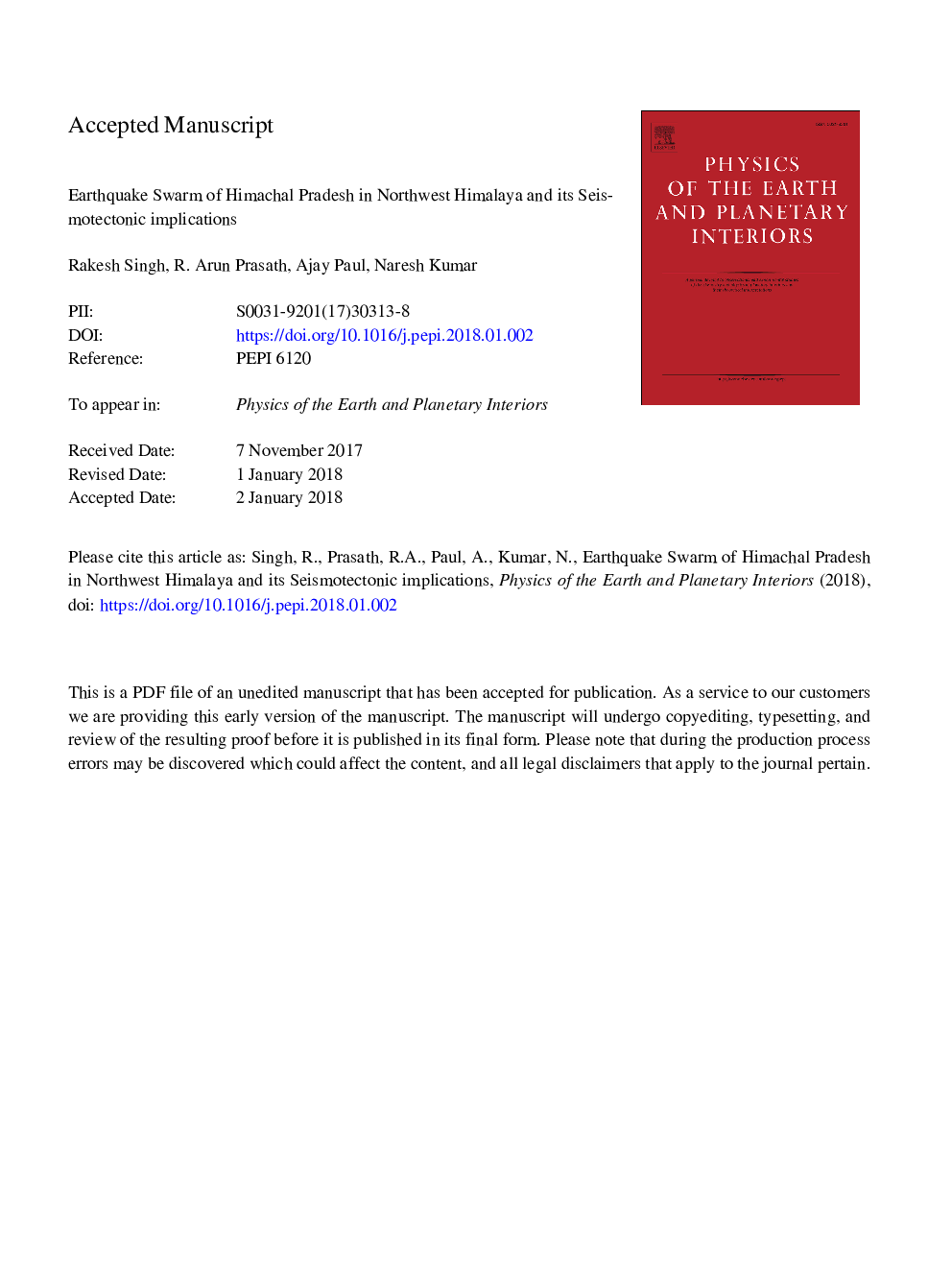| Article ID | Journal | Published Year | Pages | File Type |
|---|---|---|---|---|
| 8915744 | Physics of the Earth and Planetary Interiors | 2018 | 29 Pages |
Abstract
On the 27th of August 2016, a seismic swarm activity consisting of 58 earthquakes (1.5â¯â¤â¯MLâ¯â¤â¯4.4), which occurred in Rampur area of the Kullu-Rampur Tectonic window of Himachal Pradesh in Northwest Himalaya. The epicenters of these events are located at the northern front of the Berinag Thrust in its hanging wall. To better understand the seismotectonics of this region, we analyzed the spectral source parameters and source mechanism of this swam activity. Spectral analysis shows the low stress drop values (from 0.05 to 28.9 bars), suggesting that the upper crust has low strength to withstand accumulated strain energy in this region. The Moment Tensor solutions of 12 earthquakes (â¥2.7ML) obtained by waveform inversion yield the shallow centroid depths between 5 and 10â¯km. All these events are of dominantly thrust fault mechanism having an average dip angle ofâ¯â¼30°. The P-axes and the maximum horizontal compressive stresses are NE-SW oriented; the relative motion of the Indian Plate. The present study reveals that the swarm activity in the Himachal region of NW Himalaya is related to the out-of-sequence thrusting or the Lesser Himalayan Duplex system.
Keywords
Related Topics
Physical Sciences and Engineering
Earth and Planetary Sciences
Geophysics
Authors
Rakesh Singh, R. Arun Prasath, Ajay Paul, Naresh Kumar,
